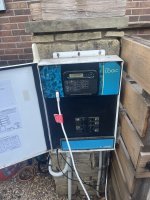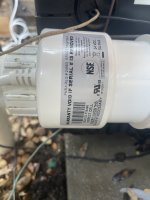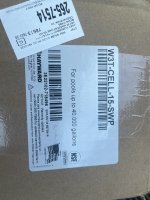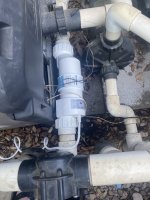- Aug 15, 2022
- 12
- Pool Size
- 15000
- Surface
- Plaster
- Chlorine
- Salt Water Generator
- SWG Type
- Hayward Aqua Rite (T-15)
Hi everyone,
I am a new pool owner (still need to update my signature with my equipment) and looking for advice on replacing my salt cell.
The current salt cell is a T-CELL-15-SWP. I have a 15,000-gallon pool.
My Hayward AquaPod has been telling me that my salt is "very low." However, when I test it with my TF-Pro Salt, it is within the normal range (3,000). I had a pool tech come out today to take a look at it, and he said the salt cell needs to be replaced. He also tested the salt level and said it was around 3,000.
He quoted me $1,822.16 + tax for the part, and $135 for labor.
Two questions:
1) Does a faulty salt cell explain the error I am receiving on the control panel?
2) Is it just me, or does this quote seem VERY high? I can buy a salt cell from Leslie's for $899. It doesn't seem like it would be difficult at all to install. Thoughts?
Thanks,
Joey
I am a new pool owner (still need to update my signature with my equipment) and looking for advice on replacing my salt cell.
The current salt cell is a T-CELL-15-SWP. I have a 15,000-gallon pool.
My Hayward AquaPod has been telling me that my salt is "very low." However, when I test it with my TF-Pro Salt, it is within the normal range (3,000). I had a pool tech come out today to take a look at it, and he said the salt cell needs to be replaced. He also tested the salt level and said it was around 3,000.
He quoted me $1,822.16 + tax for the part, and $135 for labor.
Two questions:
1) Does a faulty salt cell explain the error I am receiving on the control panel?
2) Is it just me, or does this quote seem VERY high? I can buy a salt cell from Leslie's for $899. It doesn't seem like it would be difficult at all to install. Thoughts?
Thanks,
Joey





